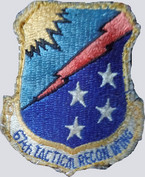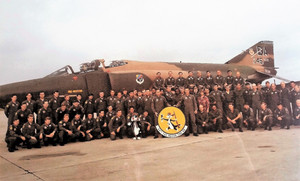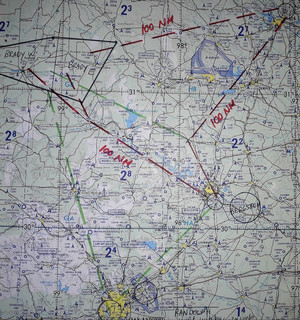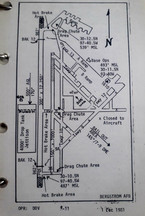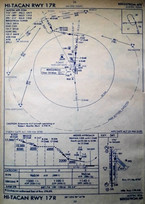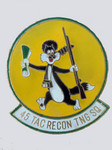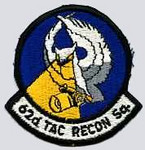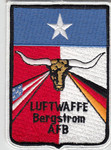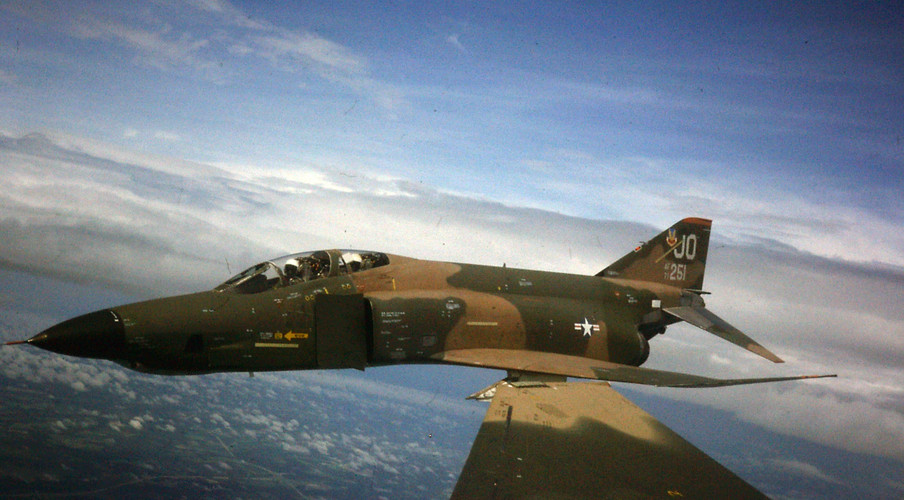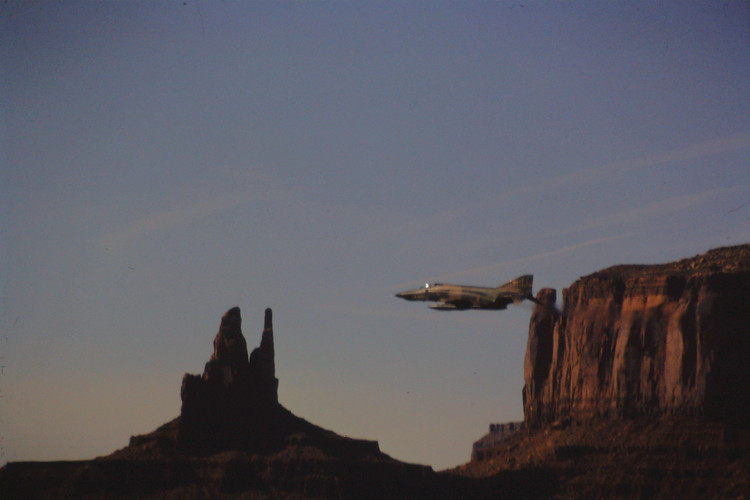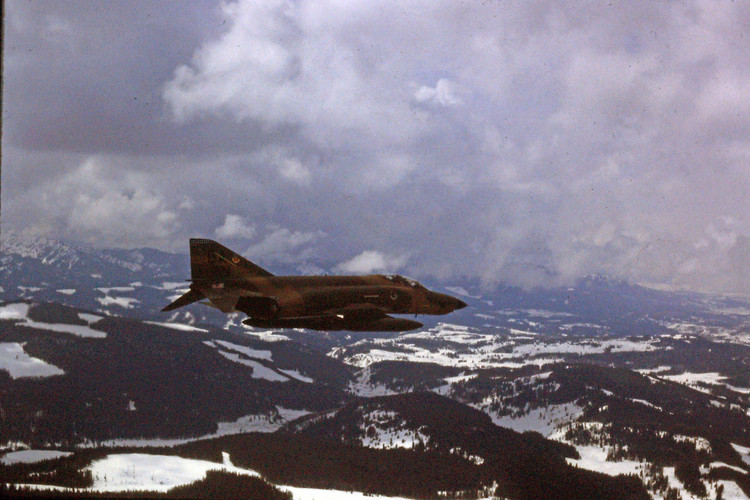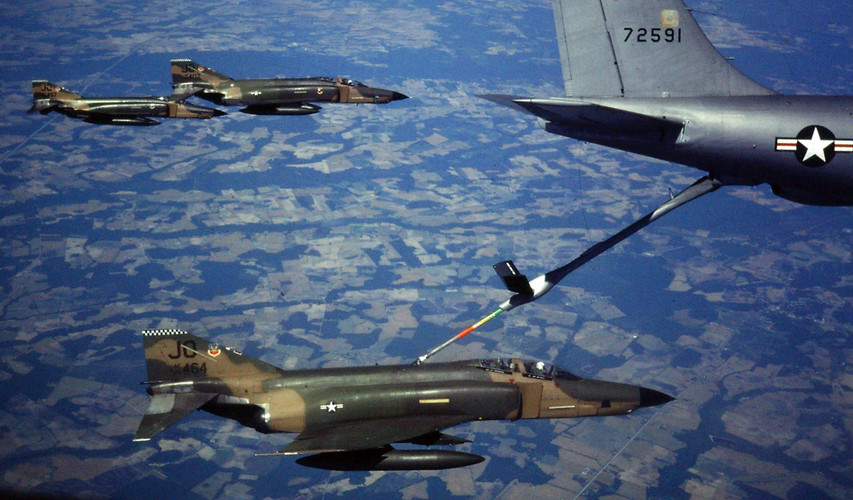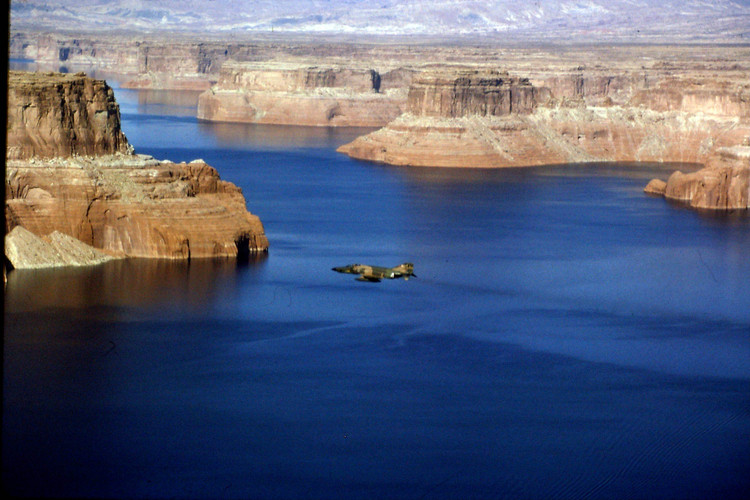Bergstrom AFB
Bergstrom AFB as training base for the Luftwaffe RF-4 E aircrews from 1982 to 1989
With the conversion of the previous RF-4 C training base Shaw AFB to F-16s in 1982 an alternative had to be found. Quite naturally, the task fell to the only remaining active Air Force Wing equipped with RF-4 Cs, the 67th Tactical Reconnaissance Wing (TRW) at Bergstrom AFB, Texas.
Bergstrom AFB with coordinates 30°11'N and 97°40' W - the same latitude as Cairo in Egypt - is located about 10 kilometers southeast of the center of the Texas capital Austin.
The airfield was built in 1942 as Del Valle Army Air Field. In 1943, it was renamed Bergstrom Army Air Field after Captain John August Earl Bergstrom, who died in the Philippines at the beginning of WW II in the Pacific.
Bergstrom covers an area of 3000 acres with only one – albeit 12 250 feet long and 300 feet wide - usable runway 17/35 in north-south orientation.
After various previous users, the 75th Tactical Reconnaissance Wing (TRW) became the main user from July 1966 on. At the same time, Headquarters 12th Air Force moved to Bergstrom and into a characteristic round facility on base, commonly referred to as a "The Donut". In July 1971, the 75th TRW was replaced by the 67th TRW.
When RF-4 C training started in 1982 four squadrons with RF-4 C “Phantom” were subordinated to the 67th TRW: Two operational squadrons, the 12th and 91st TRS and two training squadrons, the 45th and 62nd TRTS. In addition, the 924th Air Force Reserve squadron with F-4 E was also stationed at Bergstrom. To support the training and to take care of administrative and disciplinary matters involving German students, the Luftwaffe provided an exchange crew, consisting of Instructor Pilot (IP) in the 45th TRTS and Instructor Weapons System Officer (IWSO) in the 62nd TRTS. The first German IP from April 1982 on was Captain Jurgen Erbeck, who had flown the first half of his exchange tour already at Shaw; first German IWSO was Major Martin Knoll. The training at Bergstrom ended in 1989, when the 45th, 62nd and 91st squadrons were closed. The last German exchange crew, Majors Andreas von Buren and „Charles“ Schumacher returned to Germany in 1990. The remaining 12th TRS participated in Desert Shield / Storm in 1990/91 and was subsequently dissolved.
The training syllabus remained unchanged from Shaw, including general aircraft handling, instruments, formation, high performance, advanced handling, and basic fighter maneuvers as well as low level flying and air refueling day and night. Training of new aircrews lasted 6 months, during which approx. 75 hours for Pilots and 50 hours for WSOs were flown. On average, at any given time 12–15 German officers in overlapping courses were at Bergstrom. In addition to new aircrews, instructor crews from Germany were also trained. However, as a training base, Bergstrom had some disadvantages compared to Shaw. The single runway operation reduced possibilities for multiple approaches, and due to crossing flight routes instrument departures and arrivals were significantly affected by air traffic from Austin’s "Robert Mueller" municipal airfield, located only a few kilometers to the north. For these reasons, most of the overhead traffic pattern and landing practice was conducted at Waco airfield, which required to fly a triangle with 200 km long sides between Bergstrom, Brady MOA, Waco, and Bergstrom.
Most low-flying routes were also quite monotonous due to the geographical conditions of Central Texas. To reach mountainous terrain in West Texas long high-low-high flights were required, which limited the low-level part to only 15-20 minutes. W-228 warning area over the Gulf of Mexico, used for air combat training, was almost 200 NM (350 km) south of Bergstrom. Therefore, missions always had to be flown with two external tanks, and even then, only 20-25 minutes were left to practice defensive maneuvers. On the other hand, due to the Texas heat and considering the insufficient air conditioning of the F-4, instructors and students were sometimes grateful for the cooler temperatures provided by flights at higher altitudes…
Most low-flying routes were also quite monotonous due to the geographical conditions of Central Texas. To reach mountainous terrain in West Texas long high-low-high flights were required, which limited the low-level part to only 15-20 minutes. W-228 warning area over the Gulf of Mexico, used for air combat training, was almost 200 NM (350 km) south of Bergstrom. Therefore, missions always had to be flown with two external tanks, and even then, only 20-25 minutes were left to practice defensive maneuvers. On the other hand, due to the Texas heat and considering the insufficient air conditioning of the F-4, instructors and students were sometimes grateful for the cooler temperatures provided by flights at higher altitudes…
But of course, the location also had advantages. Austin, which in the early 1980s had a population of 350,000, including 50,000 students at the University of Texas, was an attractive place to live. It was located at the edge of the Texas Hill Country with beautiful parks and lakes, and it boasted a very vibrant country, blues, and rock music scene downtown on 6th street.
Since the early 1980s, the city of Austin had been trying to achieve a common civilian/military use for Bergstrom because the municipal Robert Mueller airfield, located in the center of the city with too short runways and fraught with noise and safety problems, was no longer sufficient for the fast-growing city. The Air Force initially rejected these attempts for good reason but given the circumstances Bergstrom was a natural candidate for the early Nineties base closures following the end of the Cold War. And so, the base was officially closed on September 30, 1993 and handed over to the city of Austin. After an almost complete teardown of the existing structures and extensive renovations with only the 12th AF “Donut” building - transformed into a hotel – remaining, since 1999 Austin-Bergstrom-International is the airport of the Texas capital, whose population by 2020 has almost tripled since the early Eighties.
Jürgen Erbeck



